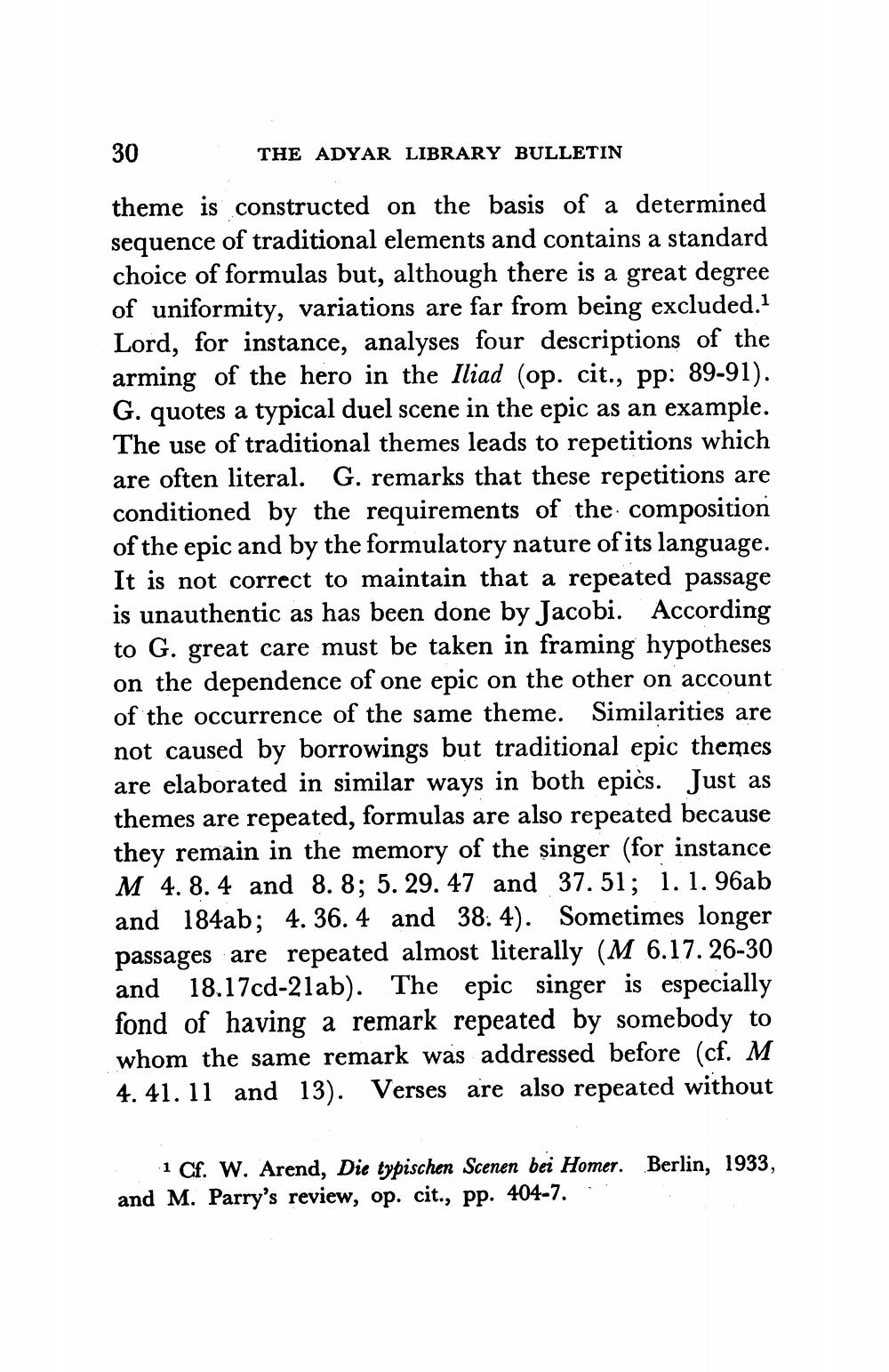________________
30
THE ADYAR LIBRARY BULLETIN
theme is constructed on the basis of a determined sequence of traditional elements and contains a standard choice of formulas but, although there is a great degree of uniformity, variations are far from being excluded.1 Lord, for instance, analyses four descriptions of the arming of the hero in the Iliad (op. cit., pp: 89-91). G. quotes a typical duel scene in the epic as an example. The use of traditional themes leads to repetitions which are often literal. G. remarks that these repetitions are conditioned by the requirements of the composition of the epic and by the formulatory nature of its language. It is not correct to maintain that a repeated passage is unauthentic as has been done by Jacobi. According to G. great care must be taken in framing hypotheses on the dependence of one epic on the other on account of the occurrence of the same theme. Similarities are not caused by borrowings but traditional epic themes are elaborated in similar ways in both epics. Just as themes are repeated, formulas are also repeated because they remain in the memory of the singer (for instance M 4. 8.4 and 8. 8; 5. 29. 47 and 37.51; 1. 1. 96ab and 184ab; 4.36.4 and 38: 4). Sometimes longer passages are repeated almost literally (M 6.17.26-30 and 18.17cd-21ab). The epic singer is especially fond of having a remark repeated by somebody to whom the same remark was addressed before (cf. M 4. 41. 11 and 13). Verses are also repeated without
1 Cf. W. Arend, Die typischen Scenen bei Homer. Berlin, 1933, and M. Parry's review, op. cit., pp. 404-7.




